Lot MIDDLE EASTERN JAMBIYA DAGGERS KNIFE LOT OF 2
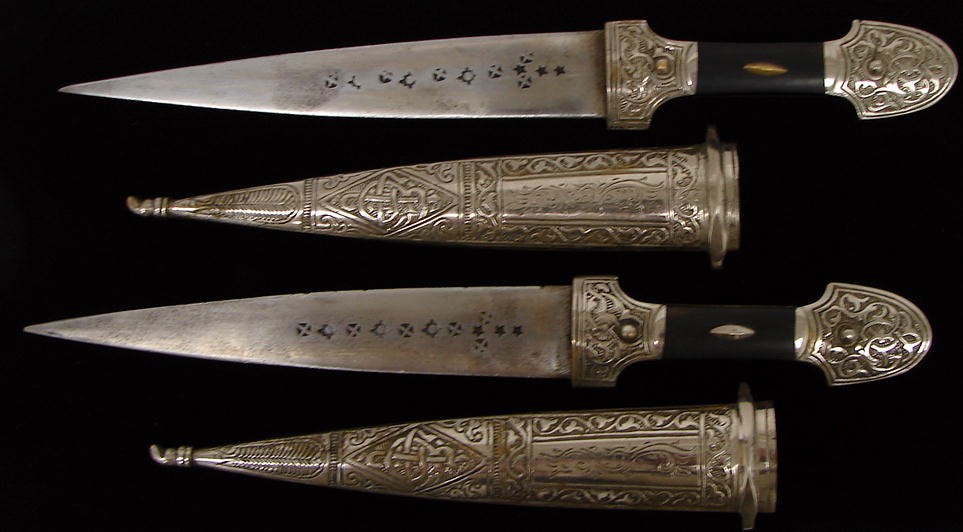
Pair of Middle Eastern daggers (K753)
The Type XVa sword is a classic medieval sword designed for thrusting. Søren Niedziella from Denmark, CC BY 2.0, via Wikimedia Commons. Oakeshott Type XVa was developed and widely used in the 14th and 15th centuries. This classic two-handed sword was a powerful weapon developed for thrusting maneuvers. Unlike other swords before it, Type XVa.

Four middle eastern daggers (jambiya) Woolley and Wallis
Medieval daggers can be broadly classified into: Anelace A medieval long dagger or a very short type of sword, in 14th century England, was worn suspended by a ring from the girdle. Sloane MS (c. 1400) records a song satirizing the use of oversized baselard knives as fashion accessories. Baselard
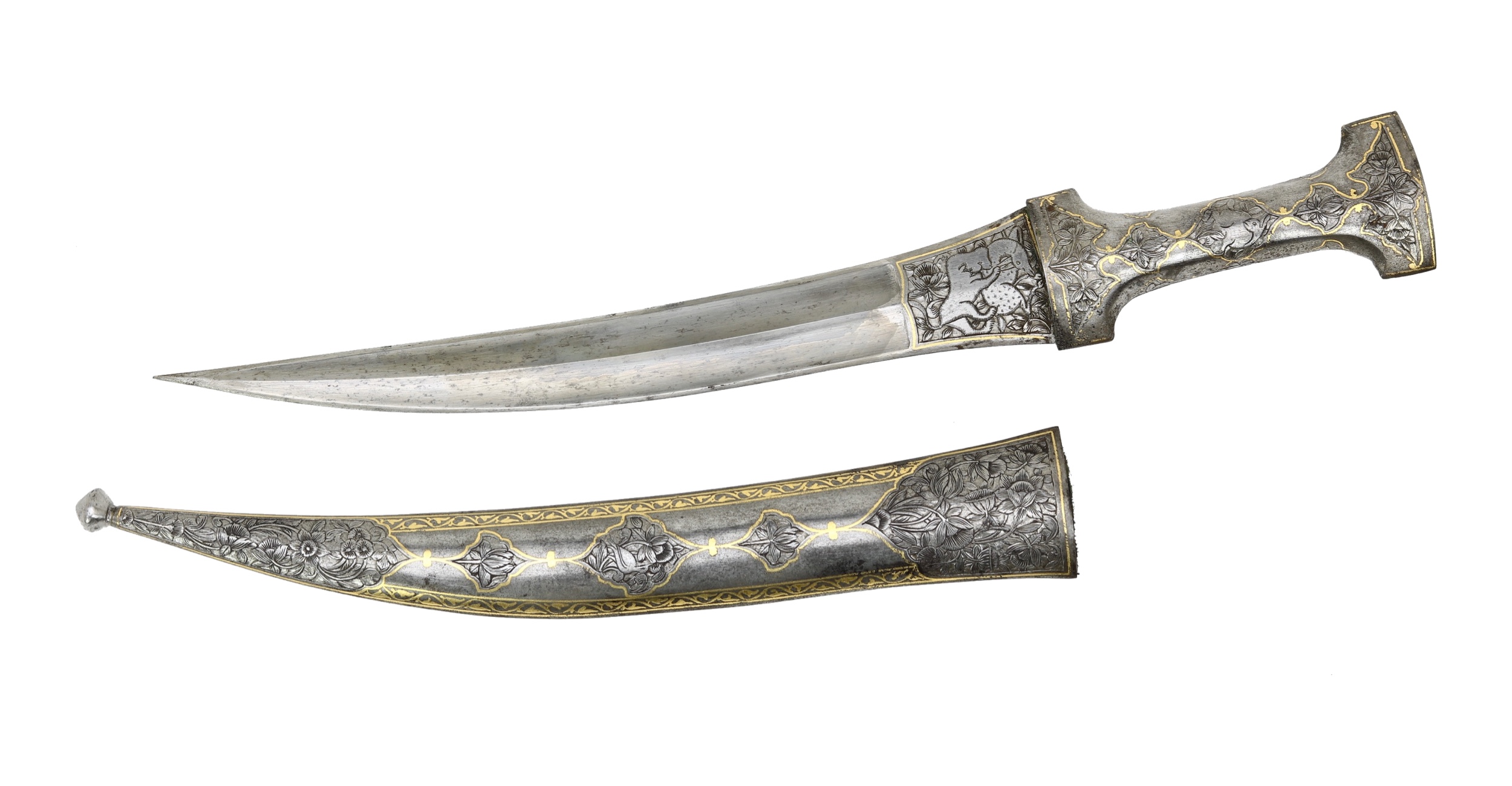
Persian all steel mounted khanjar Mandarin Mansion
List of daggers The following is a list of notable daggers, either historical or modern. A dagger is a knife with a sharp point designed for fighting. Ancient daggers Acinaces Bronze Age dagger Parazonium Pugio Sica European tradition High Middle Ages Knightly dagger Late Middle Ages

Lot MIDDLE EASTERN JAMBIYA DAGGERS KNIFE LOT OF 2
A very nice example of an original Late 19th/Early 20th Century North African (Moroccan) Jambiya dagger with the expected signs of light use. Some minor scattered handling marks and light evidence of cleaning. A classic Dress type Near Eastern Dagger of classic deign, ca. 1940. Overall length, 17". Price: $300.00

Antique Syria Syrian Middle East Dagger Kindjal Knife
1. The Scimitar One of the most iconic swords in Middle Eastern history is the scimitar. This sword has a curved blade and is often associated with Arabian culture. It was used primarily for slashing and cutting in battle. Scimitar, Photo: Rama via Wikimedia Commons What Are the Top Types of Viking Warriors? Berserkers, Jomsviking. 2. The Shamshir
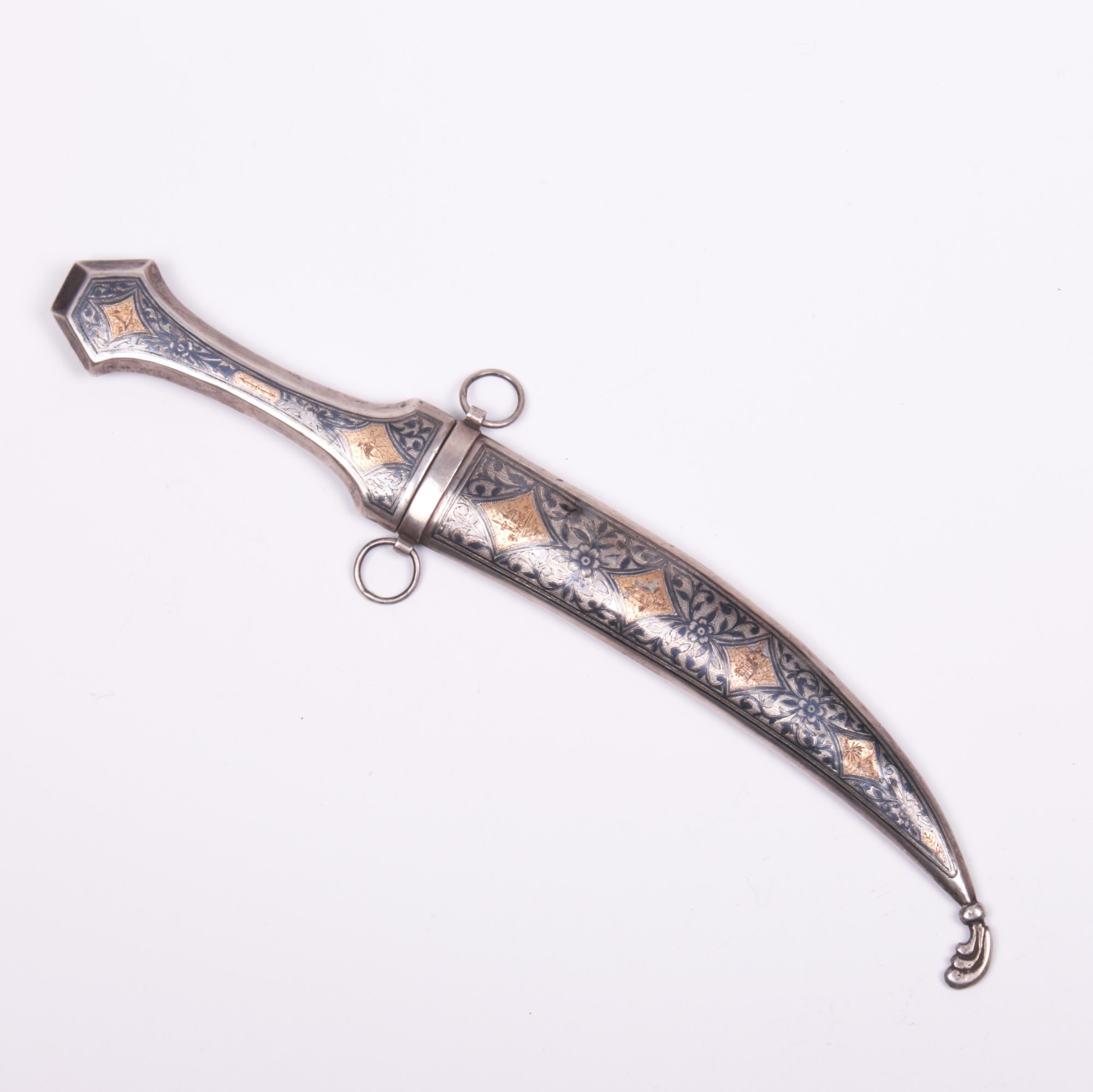
Middle East dagger. Antique weapons, collectibles, silver, icons, bronze, swords, daggers..
This is a list of historical pre- modern weapons grouped according to their uses, with rough classes set aside for very similar weapons. Some weapons may fit more than one category (e.g. the spear may be used either as a polearm or as a projectile ), and the earliest gunpowder weapons which fit within the period are also included. Offensive weapons
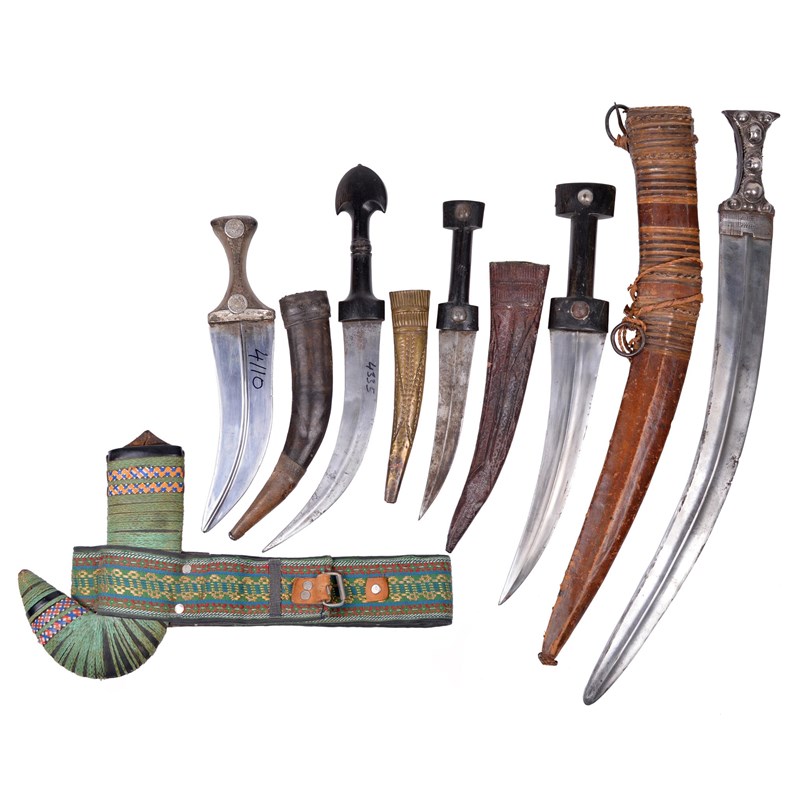
Five middle eastern daggers (jambiya) Woolley and Wallis
A Visual History of Ancient Egyptian and Sumerian Swords, Daggers and Blades. For the bow and spear-wielding ancient Egyptian or Mesopotamian (or Sumerian) warriors, swords and blades were a rare commodity.Since they were expensive to produce and required special skills to use, swords only became fashionable after around 1000 BCE, when Middle Eastern soldiers first came into conflict with.
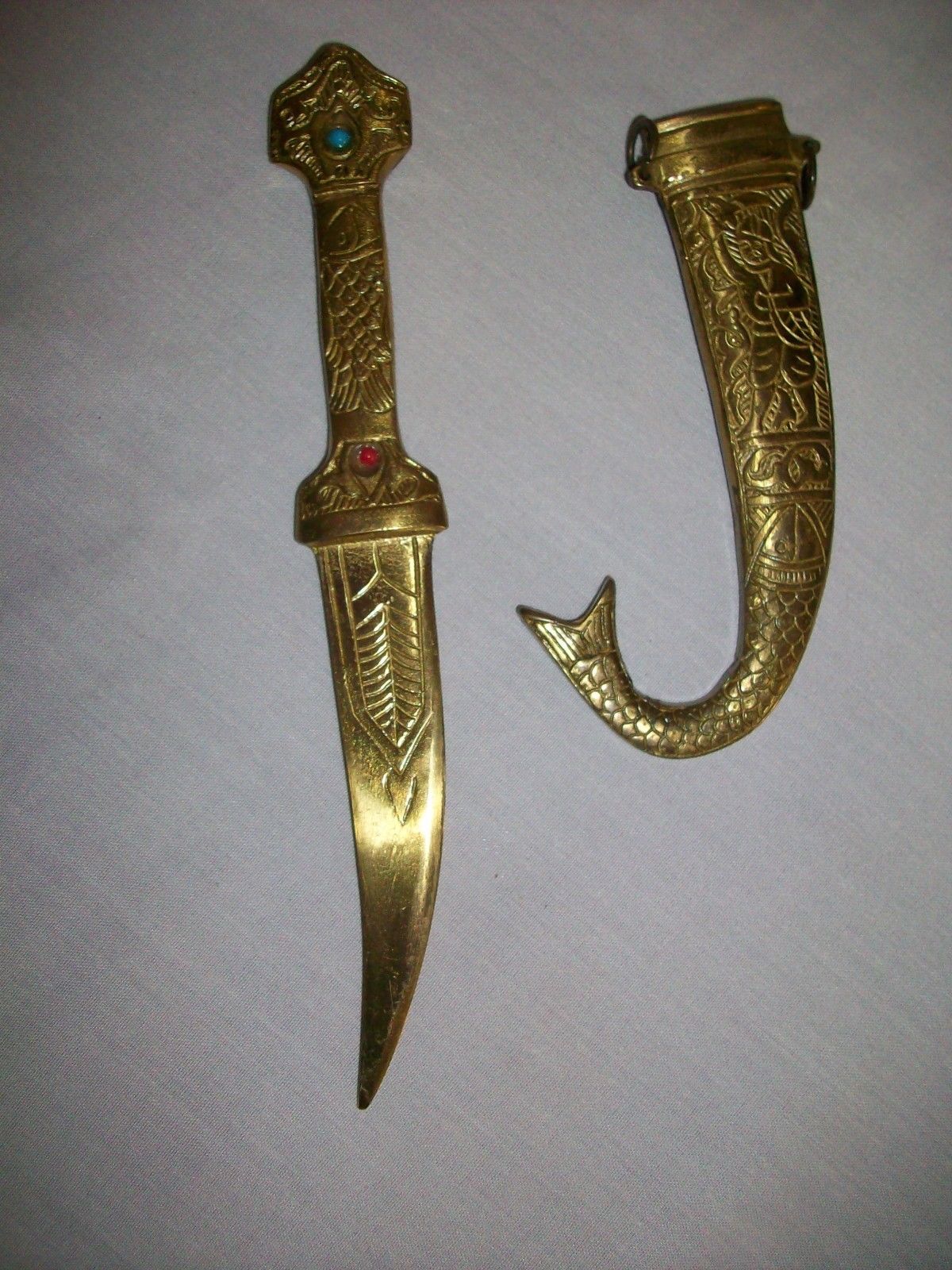
VINTAGE MIDDLE EASTERN KNIFE/DAGGER IN SHEATH BRASS TURQUOISE/CORAL STONES Antique Price
List of Medieval Daggers and Short Swords [Updated] The Middle Ages are associated with chivalric swords and a range of weapons for use on the battlefield. Daggers and short swords are less popular but still important to consider when studying weaponry of the medieval period.
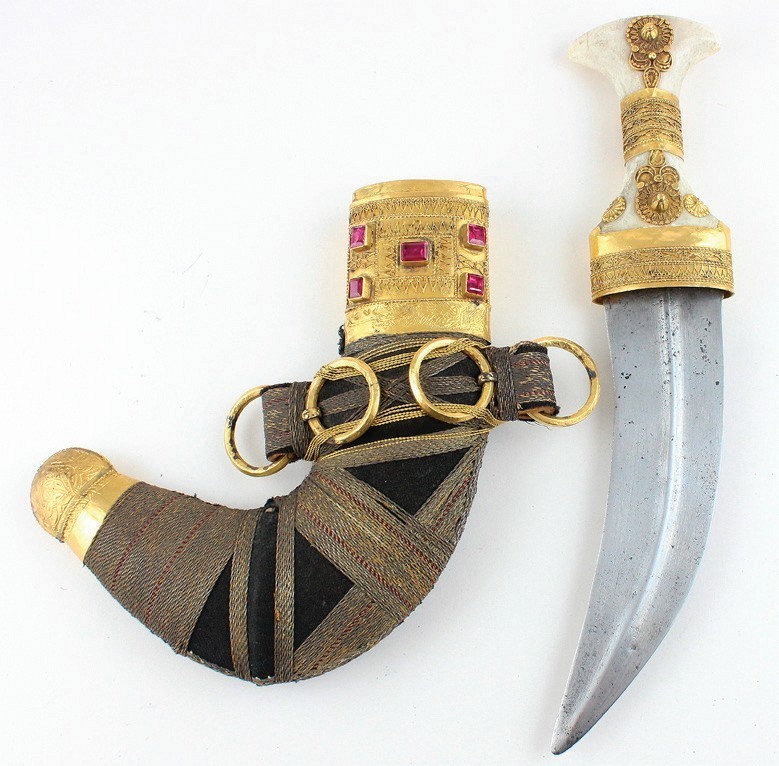
Rare Middle Eastern dagger points to a debut auction Antiques Trade Gazette
A South Arabian Figure c200 to 100 BC. The distinctive Arab dagger is one of the most iconic aspects of Arabian arms and armour. Beautifully decorated examples carry such artistic and cultural significances that they have earned places in the best museums and private collections around the world.

Middle Eastern Daggers A Trio of Traditional Blades Edged Weapons Militaria & Weapons
Stiletto Daggers. Stiletto daggers are long, thin knives with sharp, pointed blades. They were originally designed for thrusting rather than cutting and were often used as a weapon of choice in medieval times. Today, stiletto daggers are still popular for self-defense and are often used in the military and law enforcement.

A Middle Eastern curved dagger with wood handle and white me
Middle Eastern, Indian & N. African Swords Short Swords Sword Care & Maintenance US Civil War Swords Military Swords Sword Stands & Displays Modern Tactical Swords Belly Dance Swords Cutting Targets Fantasy Swords Sword Canes Plastic & Wood Training Swords Weapons Knives & Daggers Spears & Spearheads Archery Axes, Hatchets & Tomahawks

2 Middle Eastern Arabic daggers,
Introduction From the Middle Ages, men of the southern Arabian Peninsula wore daggers in their belts, both as a means of protection and a useful tool (see Figure 1 ). As the cultures of the region evolved, the design of these daggers came to represent distinct areas, tribal affiliations, and status symbols.
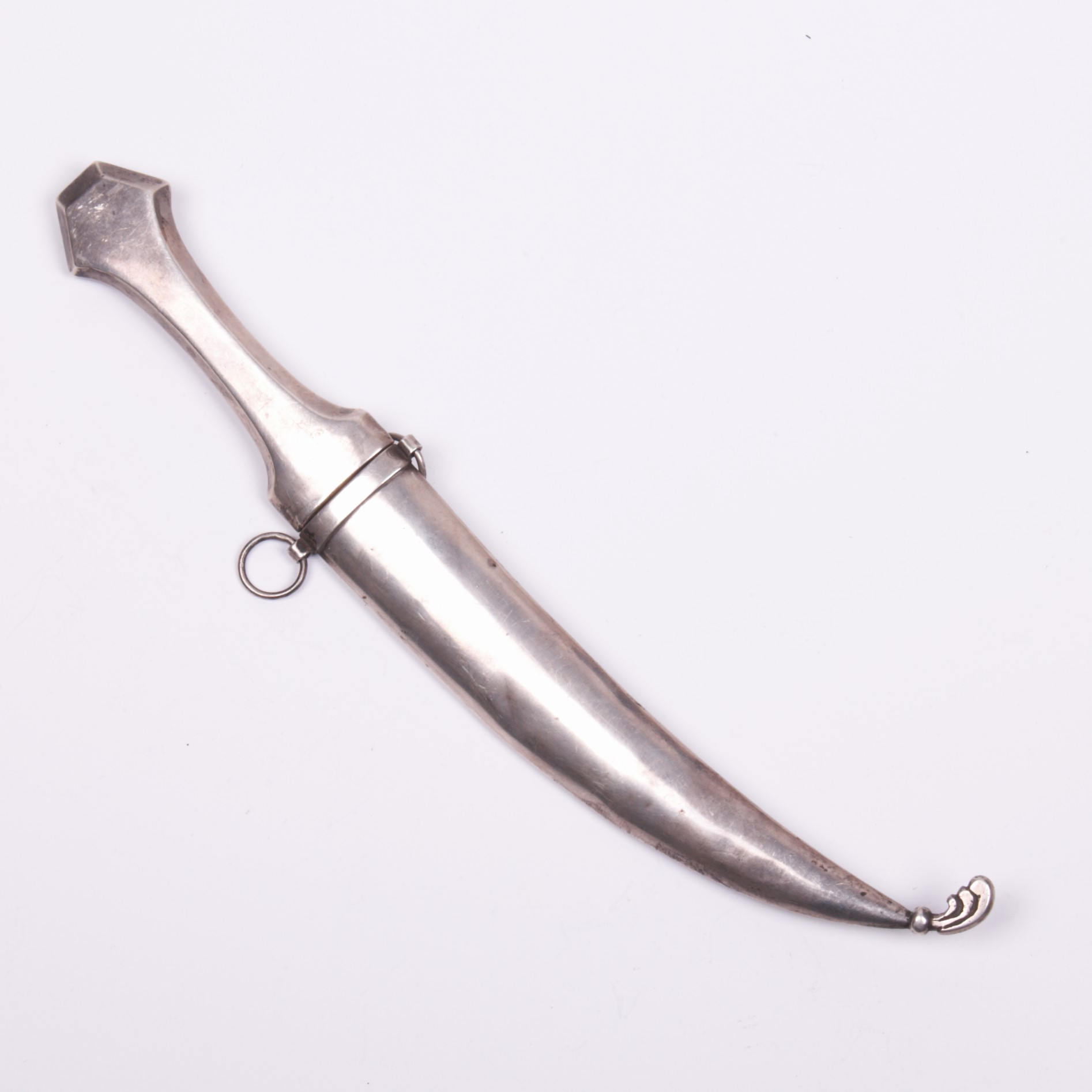
Middle East dagger. Antique weapons, collectibles, silver, icons, bronze, swords, daggers..
A rondel dagger or roundel dagger was a type of stiff-bladed dagger in Europe in the late Middle Ages (from the 14th century onwards), used by a variety of people from merchants to knights.. in Western Europe by the beginning of the 17th. Century, though the lance persisted in Eastern Europe, from whence it was reintroduced into the European.

Two Middle Eastern ornamental daggers with plated sheaths, length of the longest 25cm (2
Scimitar Two styles of scimitars: an Egyptian shamshir ( left) and an Ottoman kilij ( right) A scimitar ( / ˈsɪmɪtər / or / ˈsɪmɪtɑːr /) [1] is a single-edged sword with a convex curved blade [2] [3] [4] associated with Middle Eastern, South Asian, or North African cultures.

Antiques Atlas Middle Eastern Dagger
A jambiya, also spelled janbiya, jambya, jambia and janbia ( Arabic: جنبية janbiyyah ), also known as a shibriyeh ( Arabic: شبرية shibriyyah) in the Levant, is a specific type of dagger with a short curved blade with a medial ridge that originated from the of Saudi Arabia.

A Magnificent Saudi Dagger From Hejaz / Asir Oriental Arms
10. Daggers. Essentially a smaller version of the sword, one should not disregard it as an important weapon of war. Ranging in size from 30 to 50 centimetres (11 to 20 inches), it was a common instrument, both on the battlefield and in day-to-day use. Easy to carry - and hide - daggers could be used with a minimum of training.